If you’re keen on Japanese food, chances are you have run across Unagi Sauce; deep and dark, sweet yet savoury, packed with umami flavour, this sticky sauce makes everything it touches special. There are so many ways to use this staple of Japanese cuisine, you’ll want to have it on hand all the time.
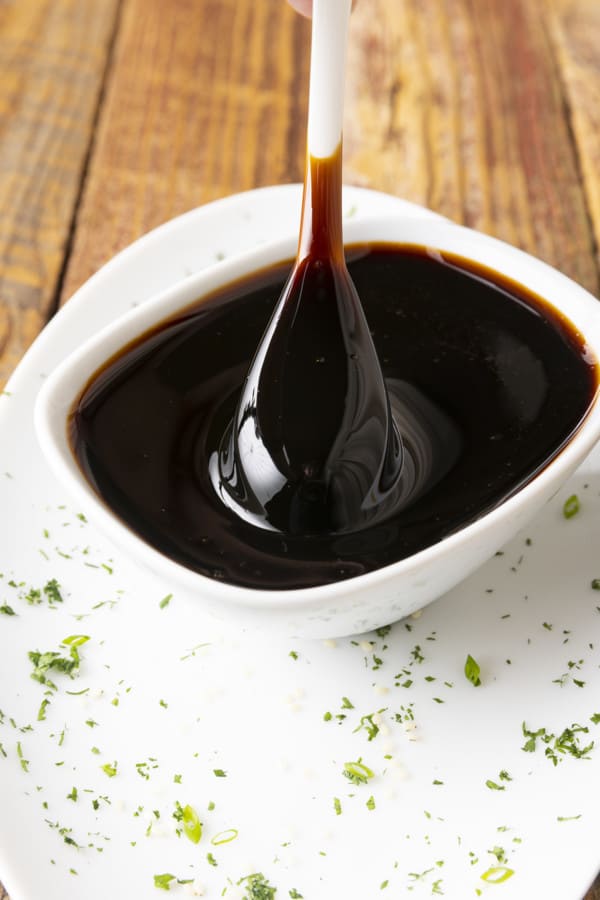
Unagi sauce is also variously known as kabayaki sauce, eel sauce, nistume, and unagi no tare. This savoury Japanese sauce is used on everything from eel (hence the eel sauce name) to bbq dishes to sushi and all sorts of other goodies.
What is Unagi Sauce?
If you’re not familiar with unagi sauce, it is a thick sauce that is used both as a dipping sauce for shrimp tempura and a delicious condiment that is brushed on grilled eel dishes like bbq sauce, drizzled over homemade sushi rolls, as a sauce for stir fry, in noodle dishes, and on dragon roll sushi, just to name a few of the many different ways it used.
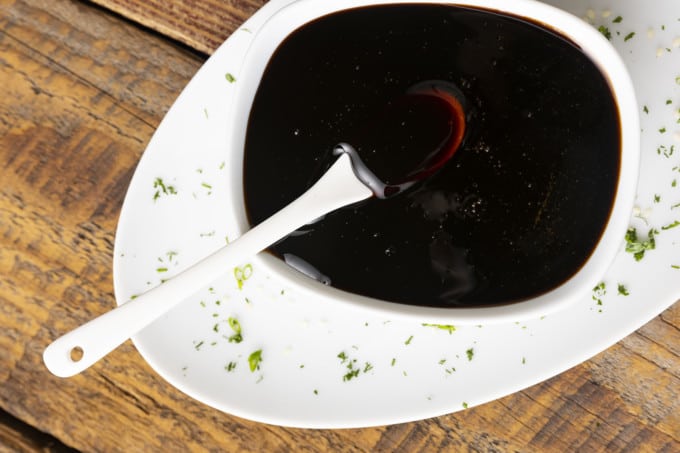
Eel sauce or unagi sauce is often confused with hoisin sauce and oyster sauce because they look pretty similar, but there are very important differences. Aside from the fact unagi sauce is one of the foundational Japanese sauces and Hoisin and Oyster Sauce are stalwarts of Chinese food, each savoury sauce is very distinct.
Oyster sauce is made from caramelized oyster juices plus soy sauce, sugar, salt, and sometimes cornstarch. Despite the three sauces sauces being strong umami delivery systems, unagi sauce is much more delicate, hoisin is much more assertive, and oyster sauce is quite sweet and savoury but very different.
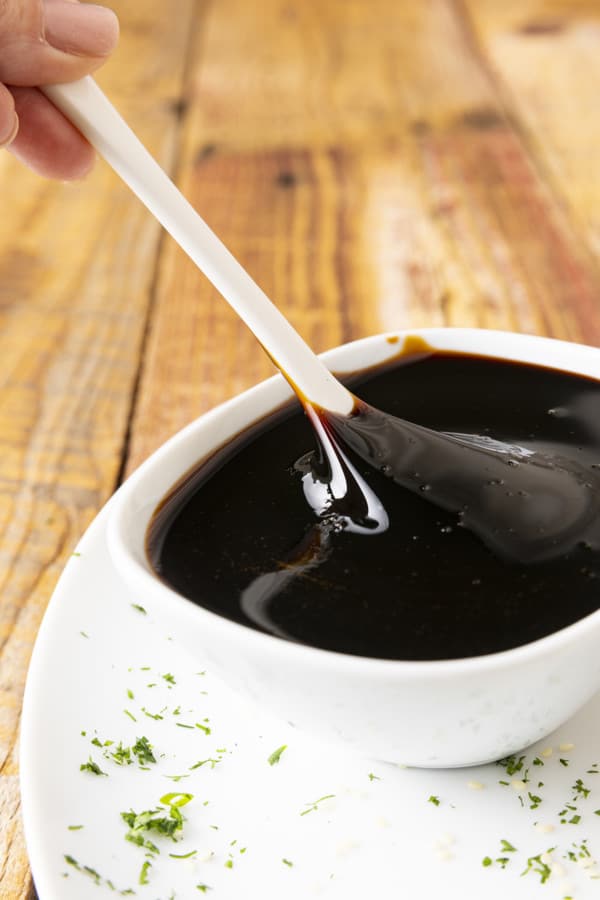
Unagi sauce is also glossier and more like teriyaki sauce in flavour. But eel sauce is far thicker and has a sweeter flavour than teriyaki sauce.
You can find it at an Asian market and at many well-stocked grocery stores, but it is so very easy to make a delicious homemade version at home. Our homemade unagi sauce made with simple ingredients captures all the magical depth of flavour of the store bought version.
Most store bought unagi sauce contains gluten because it is made with soy sauce. This is another reason homemade eel sauce is brilliant, because you can easily substitute in GF tamari sauce for a delicious unagi sauce that is gluten-free!
How to Make Unagi Sauce
I love a good ingredient and equipment list so let’s break down what you’ll need to create this delicious sauce packed with savoury flavour. I’m happy to report that our homemade eel sauce only requires three ingredients (none of which are eel) and the most basic equipment.
Ingredients for Eel Sauce
- Low Sodium Soy Sauce (or Gluten-Free Tamari Sauce)
- Sugar
- Mirin
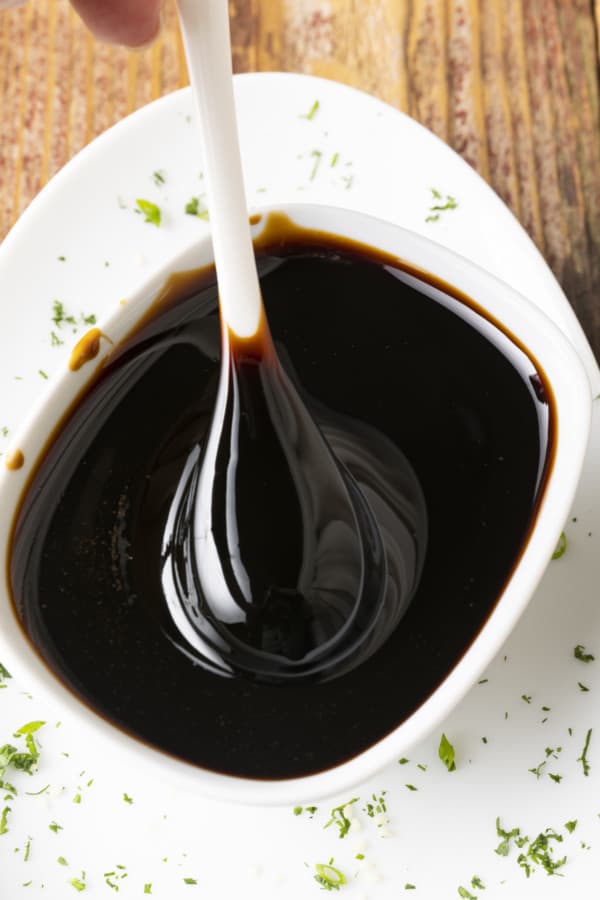
It’s truly that easy! I prefer to start with a good quality, low-sodium soy sauce. The quality is important because you’re going to be reducing the sauce and concentrating the flavour.
This is the same reason I go for low-sodium soy sauce. Otherwise, you may end up with an overly salty sauce.
As mentioned above, if eliminating gluten from your diet is a concern, you can easily make this sauce gluten-free. There are several readily available gluten-free tamari sauces that are good substitutes for soy sauce in this recipe.
And when it comes to sugar, you have options, too! Granulated white sugar and raw sugar are both good choices for the sweetener. While you could technically use honey or maple syrup, I think they both come into the sauce with too much character of their own.
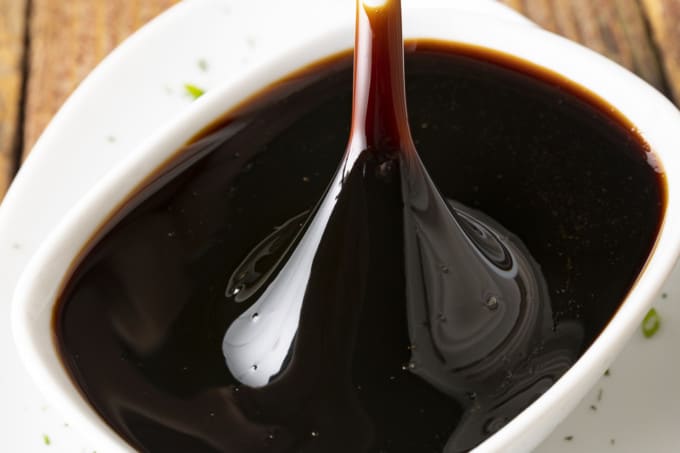
Mirin is a sweet rice wine that is used in many Japanese dishes. You can purchase it at Asian markets, grocery stores, and online. If you cannot find it, you can substitute sake for a slightly different flavour.
How To Make Eel Sauce
When I said you don’t need anything specialized to make Unagi or Eel Sauce, I meant it. You quite literally need what nearly every kitchen already has.
- Measuring Cup
- Small Saucepan
- Whisk or Heat-Proof Spatula
- Mason Jar or Heat Proof Container with an Air-Tight Lid
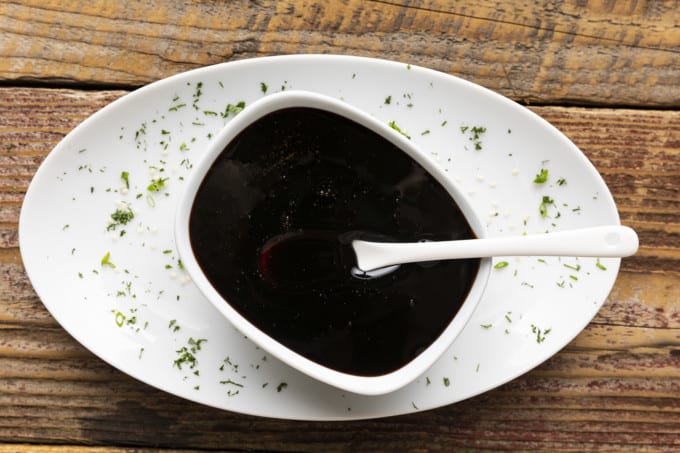
Unagi Sauce Recipe
In a small saucepan over medium heat, whisk together the soy sauce, mirin, and sugar until the sugar is dissolved. Bring to a gentle boil.
Keep at a gentle boil until the sauce is reduced by about ⅓ of its original volume. You can test the doneness by dipping a spoon into the sauce and gently drawing your finger through it. If it stays clean where you pulled your finger through, the sauce is ready.
Remember that the sauce will thicken as it cools. This should have about the consistency of honey at room temperature.
Pour the sauce into a clean canning jar or other heat proof container and lid loosely. Allow it to cool to room temperature before fixing the lid on tightly and storing in the refrigerator for up to 2 weeks.
NOTES:
Eel sauce is naturally about the consistency of honey at room temperature. If you’d prefer a much thicker eel sauce, you can up to 2 teaspoons of cornstarch with 2 tablespoons of water until it is dissolved. Pour into the hot eel sauce, whisking constantly, until the mixture returns to a boil. Boil gently, stirring constantly, for 2 minutes.
Pour into a mason jar or other airtight container and store as instructed above.
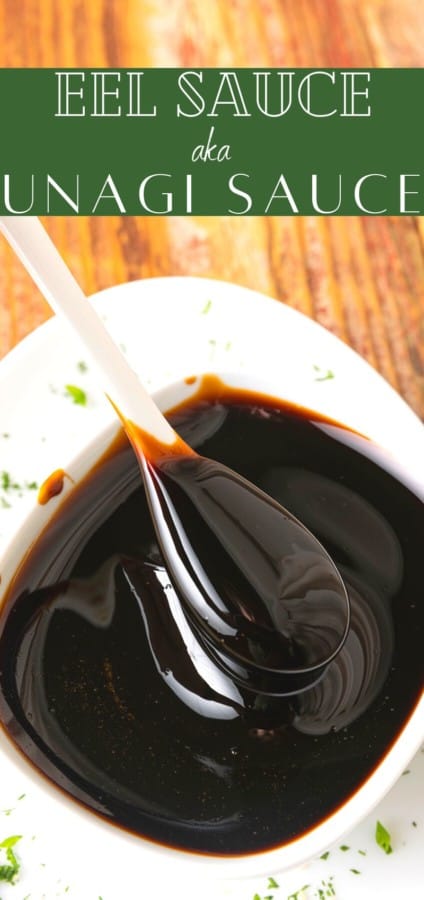
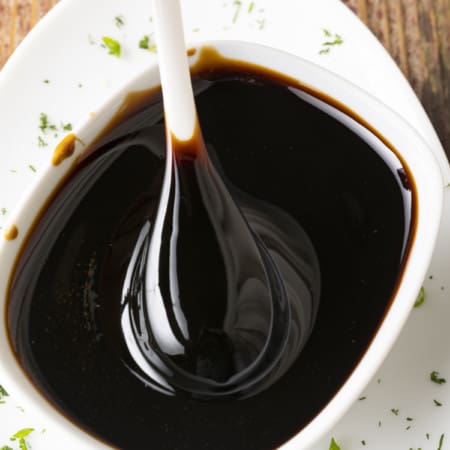
Unagi Sauce
Rate RecipeIngredients
- ½ cup soy sauce
- ½ cup mirin
- ½ cup granulated sugar
Optional:
- Up to 2 teaspoons cornstarch for an extra thick sauce See Notes
Instructions
- In a small saucepan over medium heat, whisk together the soy sauce, mirin, and sugar until the sugar is dissolved. Bring to a gentle boil.
- Keep at a gentle boil until the sauce is reduced by about ⅓ of its original volume. You can test the doneness by dipping a spoon into the sauce and gently drawing your finger through it. If it stays clean where you pulled your finger through, the sauce is ready.
- Remember that the sauce will thicken as it cools. This should have about the consistency of honey at room temperature.
- Pour the sauce into a clean canning jar or other heat proof container and lid loosely. Allow it to cool to room temperature before fixing the lid on tightly and storing in the refrigerator for up to 2 weeks.
Notes
Nutrition
Nutritional information is an estimate and provided to you as a courtesy. You should calculate the nutritional information with the actual ingredients used in your recipe using your preferred nutrition calculator.
did you make this recipe?
Make sure to tag @foodiewithfam on Instagram and #hashtag it #foodiewithfamily so I can check it out!
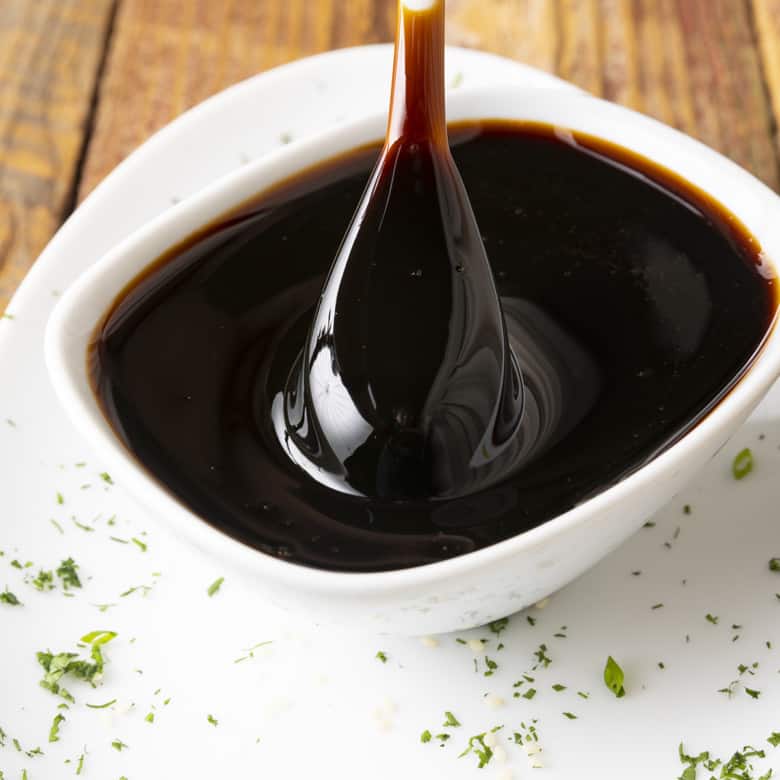
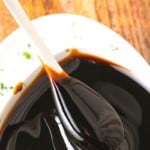



Comments + Reviews